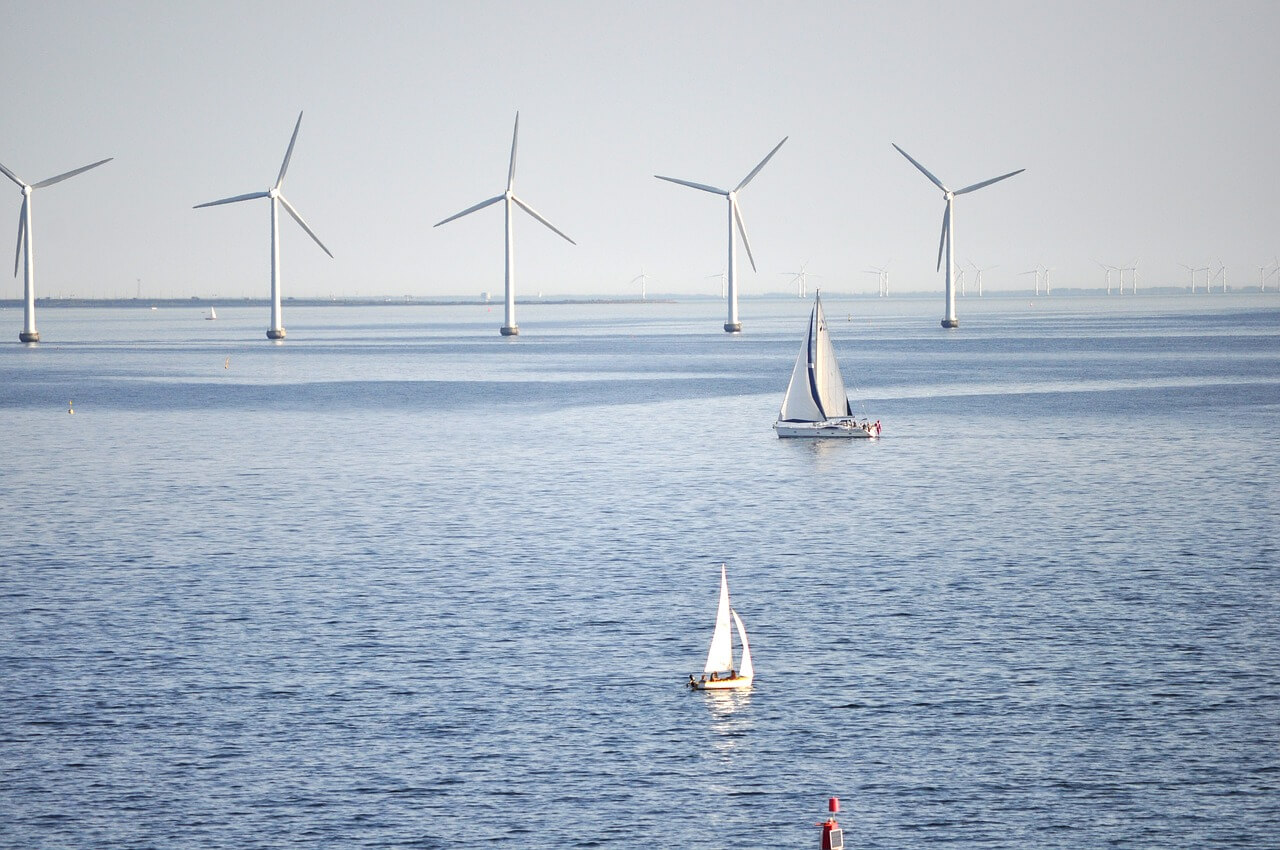Wind energy development in the EU: Lithuania lags behind in terms of procedure times but is among the leaders in terms of installed capacity
Europe is being encouraged to accelerate the development of wind and solar energy, not only to reduce its dependence on Russian fossil fuels, but also to meet its commitments to combat climate change by limiting global warming to 1.5°C by 2030. In terms of the pace of wind energy development, Lithuania is one of only 4 European Union (EU) countries whose annual wind capacity growth is sufficient to meet the Community’s targets, but in terms of the length of the procedures needed to develop wind farms, it is still almost twice as far behind the EU’s recommendations.
In 2021, 34 gigawatts (GW) of wind and solar capacity were installed in the EU. The independent energy think-tank EMBER estimates that to reach the 1.5 °C target, annual wind and solar capacity would need to double to 76 GW by 2026. Projections show that the EU will add only 38 GW by that date, barely half of the required annual capacity increase.
“Europe has no shortage of ambition for renewable energy, but it faces challenges in implementing its plans. The higher targets are still not being realised and Europe as a whole should act urgently to remove permitting barriers and unlock the full potential of renewables,” commented Harriet Fox, Energy and Climate Data Analyst at EMBER.
Permitting lags
According to the analysts, only four of the 27 EU countries have sufficient wind capacity growth at the projected rate of development – Finland, Croatia, Sweden and Lithuania. However, it is worrying that none of the EU countries meet the Community guidelines for issuing permits for wind farms within a 2-year timeframe.
Romania is the fastest in preparing permits for wind farms (30 months), while Croatia has the longest process (120 months). According to Edgars Maladauskas, Acting Director of the Lithuanian Wind Energy Association (LWEA), it currently takes 36-42 months to develop new wind farms in Lithuania. EMBER analysts also quote a timeframe of 42 months or 3.5 years.
“While the preparation of the wind farm infrastructure and the construction of the wind turbines themselves takes a long time (12-15 months if they are ordered), even more time is spent on publicising the project proposals and dealing with the necessary documents: after signing the Letter of Intent, obtaining the development permit, coordinating the project’s connection to the electricity grid, and so on. Preparing the technical design alone can take up to 9 months. Litgrid procedures are also stagnant – it is necessary to speed up and simplify the procedure for issuing the conditions and the alignment procedure,” he says, stressing that the wind energy industry needs speed.
The need to speed up the development of wind farms in Lithuania should give a boost not only to developers but also to the entire energy sector in the country.
“Last year, Lithuania’s existing wind farms generated 1.36 terawatt hours (TWh) of electricity – just 11.5% of the country’s final demand for electricity. Only by increasing electricity generation from renewable sources can we achieve the desired energy independence, which is not possible without faster development of wind and solar farms. The government and other institutions, aware of the importance of the situation, should be interested in helping to accelerate the implementation of the projects that are already under development,” said the LVEA CEO.
Wind and solar synergies could save the day
Meanwhile, the development of solar farms in the EU is moving much faster. Not only is Lithuania leading the EU in issuing permits for the development of solar farms, but it is also well ahead of the Community’s recommended timeframe of 2 years, which is just 12 months.
“The more favourable attitude towards solar power plants is due to both cheaper and faster installation and simpler operation – both residents and businesses can install solar power plants on the roofs of buildings, even though it is wind power that can guarantee the cheapest electricity generation and the highest volumes. In addition, solar energy faces challenges once the 2GW threshold is reached. The solution is to promote the development of hybrid solar and wind farms,” says the LVEA CEO.
It is important to realise that solar and wind should not be pitted against each other – the synergies between these different renewable energies can bring more benefits than if they were to work alone. Hybrid wind and solar farms are rapidly gaining popularity in Europe, ensuring that electricity is generated much more efficiently – solar power plants operate when the sun is shining, while wind farms generate electricity during the windier and colder periods of the year. These power plants, when connected to the grid, ensure a more even transmission of electricity, can better meet electricity demand and make more efficient use of available grid capacity.
In addition, hybrid parks can be equipped with lithium batteries to store surplus electricity or use the electricity generated by the power plants to produce green hydrogen, which can help balance the load on the grid.
“With record electricity prices on the power exchange and the Pearl Energy situation, we need to move forward even faster with wind energy development. Let’s not look to European plans or recommendations on who should develop renewable energy and how much. Lithuania must become energy independent from other countries as soon as possible and have at least 150% sustainable electricity, because electricity consumption will only grow in the future. The only way to combat high electricity prices is to speed up the development of wind and solar energy and other technologies that will balance and reduce prices and reduce energy poverty and chaos. As always, the country that jumps on the renewable energy train first will be the biggest winner,” said Mr Maladauskas.


